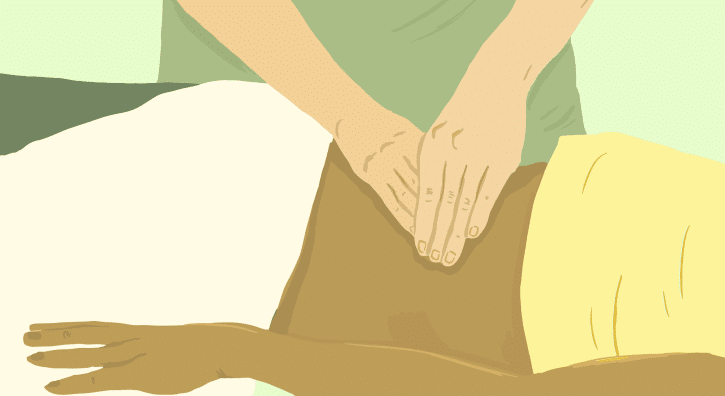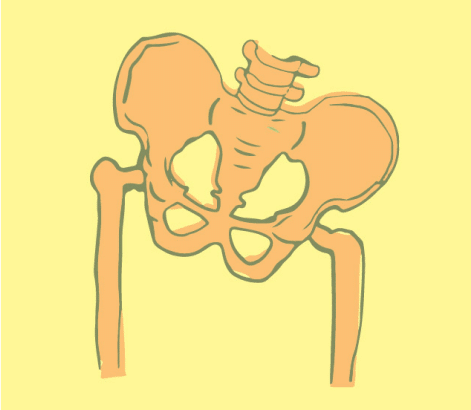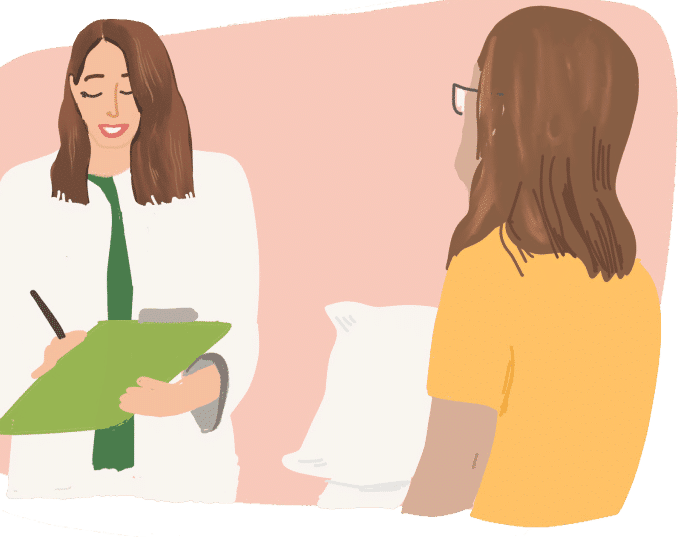

Symptoms
- Sensations like stinging, soreness, or burning in the vaginal canal, vulva, perineal area, or anus are frequent signs of pelvic pain
- Discomfort may occur during sex, while wearing form-fitting clothes, or after sitting for extended periods
- Symptoms are often aggravated by physical movement or specific forms of exercise
- Pelvic pain may be linked with urinary problems such as an urgent need to urinate, painful urination, frequent bathroom trips, or leakage
- Some women also notice digestive symptoms like bloating, constipation, or irregular bowel movements
- Triggers can include tampon use or intimacy, though sometimes symptoms appear with no identifiable reason
- Experiences differ—some women feel symptoms constantly, while others notice them only at certain times

Symptoms
- Sensations like stinging, soreness, or burning in the vaginal canal, vulva, perineal area, or anus are frequent signs of pelvic pain
- Discomfort may occur during sex, while wearing form-fitting clothes, or after sitting for extended periods
- Symptoms are often aggravated by physical movement or specific forms of exercise
- Pelvic pain may be linked with urinary problems such as an urgent need to urinate, painful urination, frequent bathroom trips, or leakage
- Some women also notice digestive symptoms like bloating, constipation, or irregular bowel movements
- Triggers can include tampon use or intimacy, though sometimes symptoms appear with no identifiable reason
- Experiences differ—some women feel symptoms constantly, while others notice them only at certain times

Associated Diagnoses
Diagnoses such as Endometriosis, Vulvodynia, Interstitial Cystitis/Painful Bladder Syndrome, Pudendal Neuralgia, Lichen Sclerosus, Lichen Planus, and Irritable Bowel Syndrome are associated with pelvic pain and pelvic floor dysfunction.


Causes of Pelvic Pain
- Ongoing bladder and vaginal infections, or chronic conditions related to the gastrointestinal, urological, gynecological, or dermatological systems
- A high percentage of women with long-term pelvic pain are diagnosed with pelvic floor dysfunction
- Use of specific prescriptions such as hormonal birth control, medications for acne, or hormone suppression treatments for disorders like Endometriosis or PCOS
- Surgical interventions that affect the pelvic organs, including hysterectomies or prolapse surgeries, as well as trauma from childbirth
- Injuries involving the musculoskeletal system or joints
- Structural issues such as scoliosis, hip misalignment, leg length differences, SI joint instability, or piriformis syndrome
- Labor and vaginal birth
- Natural hormonal decline and pelvic tissue changes during menopause
- Genital mutilation or culturally related genital cutting practices
Causes of Pelvic Pain
- Ongoing bladder and vaginal infections, or chronic conditions related to the gastrointestinal, urological, gynecological, or dermatological systems
- A high percentage of women with long-term pelvic pain are diagnosed with pelvic floor dysfunction
- Use of specific prescriptions such as hormonal birth control, medications for acne, or hormone suppression treatments for disorders like Endometriosis or PCOS
- Surgical interventions that affect the pelvic organs, including hysterectomies or prolapse surgeries, as well as trauma from childbirth
- Injuries involving the musculoskeletal system or joints
- Structural issues such as scoliosis, hip misalignment, leg length differences, SI joint instability, or piriformis syndrome
- Labor and vaginal birth
- Natural hormonal decline and pelvic tissue changes during menopause
- Genital mutilation or culturally related genital cutting practices

Diagnostic Challenges
It can take a woman suffering from pelvic pain several years to finally receive a proper diagnosis—studies suggest an average of five years, with conditions like Endometriosis often going undiagnosed for over a decade. One reason is that pelvic pain often mimics other health concerns, such as STIs, UTIs, yeast infections, and bladder problems. These similarities frequently lead to multiple misdiagnoses and rounds of ineffective treatments. When pelvic floor dysfunction is the underlying issue, it often goes undetected because standard diagnostic tests come back normal, creating confusion for both the patient and their provider. Many women begin physical and occupational therapy having never heard of the pelvic floor, unaware it could be the root of their chronic discomfort.
Diagnostic Challenges
It can take a woman suffering from pelvic pain several years to finally receive a proper diagnosis—studies suggest an average of five years, with conditions like Endometriosis often going undiagnosed for over a decade. One reason is that pelvic pain often mimics other health concerns, such as STIs, UTIs, yeast infections, and bladder problems. These similarities frequently lead to multiple misdiagnoses and rounds of ineffective treatments. When pelvic floor dysfunction is the underlying issue, it often goes undetected because standard diagnostic tests come back normal, creating confusion for both the patient and their provider. Many women begin physical and occupational therapy having never heard of the pelvic floor, unaware it could be the root of their chronic discomfort.
Treatment:
How We Can Help You

For women in Burbank dealing with ongoing pelvic discomfort, a pelvic floor physical and occupational therapy evaluation could be the turning point they’ve been waiting for. This thorough initial visit explores your medical history, prior diagnoses, what treatments you’ve previously undergone, and whether they brought any improvement. Many of the women we work with in Burbank come to us feeling mentally and emotionally drained from repeated setbacks and ineffective care. During the physical portion of your assessment, your therapist will examine key components like muscular function, nerve sensitivity, tissue health, joint movement, and general posture and mobility. Afterward, you’ll receive a clear breakdown of what’s causing your symptoms and a step-by-step treatment plan crafted around your unique situation and recovery goals. Sessions are typically held once or twice per week for approximately three months and include a home routine to enhance results between visits. Our therapists also collaborate with your broader care team to offer a unified and compassionate approach. We’re here to help you move forward and feel empowered again.

Treatment:
How We Can Help You
For women in Burbank dealing with ongoing pelvic discomfort, a pelvic floor physical and occupational therapy evaluation could be the turning point they’ve been waiting for. This thorough initial visit explores your medical history, prior diagnoses, what treatments you’ve previously undergone, and whether they brought any improvement. Many of the women we work with in Burbank come to us feeling mentally and emotionally drained from repeated setbacks and ineffective care. During the physical portion of your assessment, your therapist will examine key components like muscular function, nerve sensitivity, tissue health, joint movement, and general posture and mobility. Afterward, you’ll receive a clear breakdown of what’s causing your symptoms and a step-by-step treatment plan crafted around your unique situation and recovery goals. Sessions are typically held once or twice per week for approximately three months and include a home routine to enhance results between visits. Our therapists also collaborate with your broader care team to offer a unified and compassionate approach. We’re here to help you move forward and feel empowered again.
How Can We Help You?
We invite you to use the form below to send us your inquiries or comments. Your email address is essential, as it allows us to follow up with a personal reply. Please feel confident that all the information you submit will be kept completely private and used solely for communication purposes.

Join The Newsletter. Win a copy of our book, “Pelvic Pain Explained!”
We love getting to know our website visitors. Please tell us a little bit about yourself and get the latest info via PHRC e-newsletter!
*Subscribers automatically eligible to win our book, “Pelvic Pain Explained.”
At its foundation, Pelvic Pain Explained explores where pelvic pain stems from, the difficulties both individuals and healthcare providers experience in diagnosing and effectively treating it, the maze of treatment choices available, and the profound psychological and relationship-based consequences of coping with a condition that typically remains hidden.


